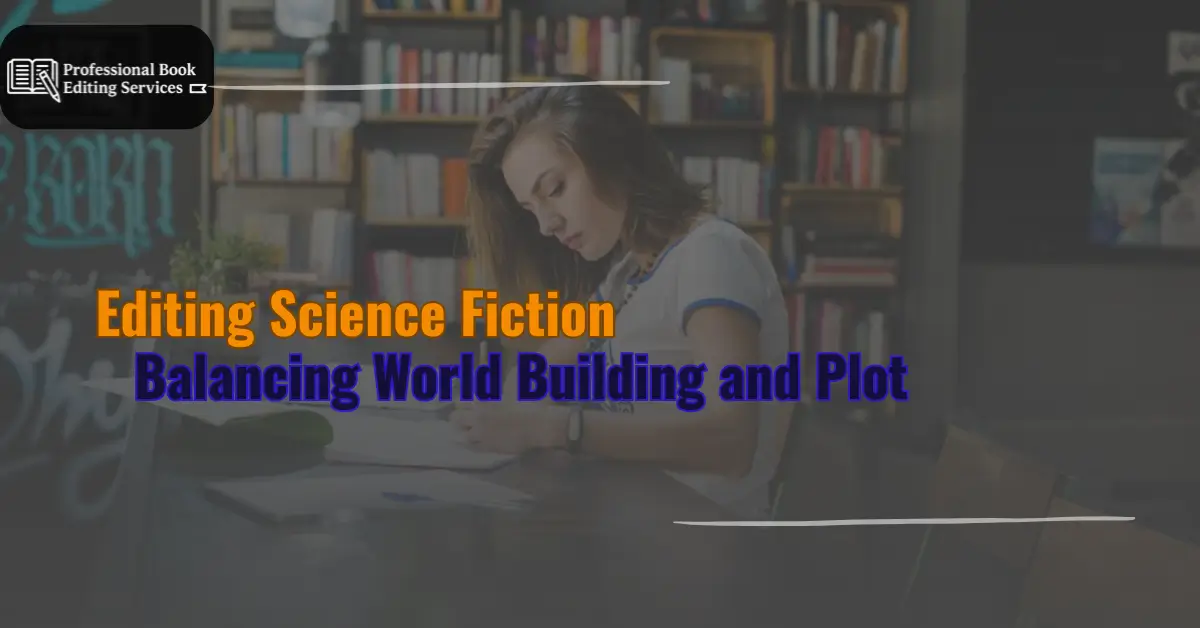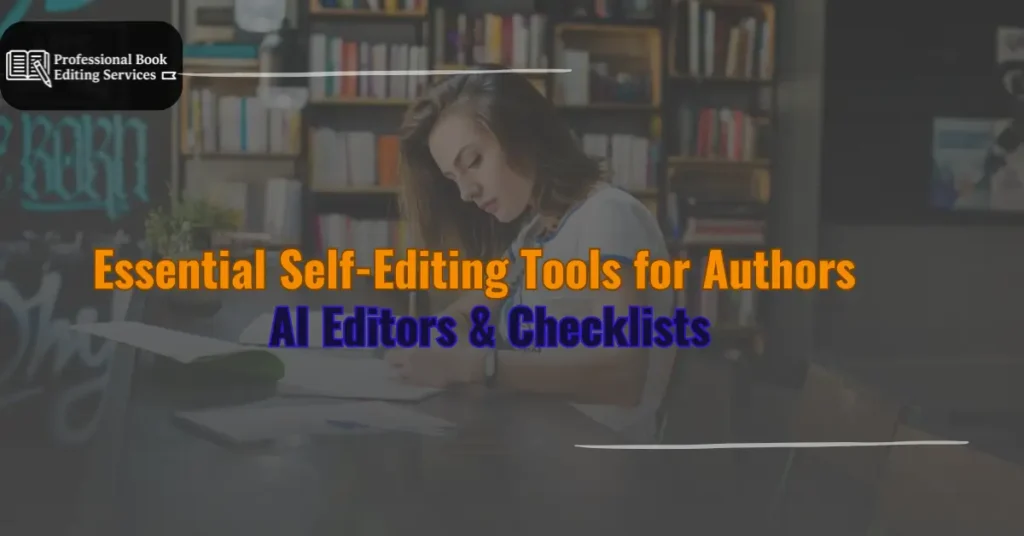Science fiction stretches imagination into the unknown, introducing readers to alternate timelines, futuristic tech, and alien civilizations. However, no matter how inventive the setting, a sci-fi story only works if the world makes sense, the characters feel relatable, and the plot keeps moving forward. And with all the complexities that sci-fi brings, it can be hard to keep track of the rules you established while writing.
This is why science fiction editing is one of the most demanding editorial tasks. It’s a balancing act between building immersive worlds and delivering a tightly woven narrative. Writers often get swept up in crafting their universes. That’s part of the fun. But readers don’t just want maps, jargon, and rules. They want a story. And they want it to feel coherent and believable, even if it’s set on a planet made of gas orbiting a binary sun. Editors help ensure that the speculative never overtakes the human, and that every invented detail supports the plot, not distracts from it.
Let’s explore how professional editors bring balance to the bold ideas that define science fiction.
Editing Begins with Internal Logic
Unlike contemporary fiction, sci-fi requires a consistent internal framework. The worlds may be invented, but their rules must be stable. Once a writer establishes how a technology or political system works, it must operate logically throughout the story.
Editors play a crucial role in checking for contradictions, broken rules, or shifts in the world’s internal logic. If faster-than-light travel is impossible in chapter one, it shouldn’t be casually used in chapter twelve. These inconsistencies pull readers out of the experience and create doubt in the reliability of the narrative.
Maintaining this consistency is where science fiction editing differs most from genres like memoir or non-fiction editing, where the world is already defined. In sci-fi, the editor becomes both a reader and an internal critic of the constructed universe, always asking: Does this make sense based on what the author has already shown?
Don’t Lose the Story in the Setting
While strong world-building is essential, it can’t exist in a vacuum. Science fiction must still tell a story, with conflict, characters, tension, and growth. The best editors ensure that world-building supports the plot, rather than slowing it down.
This often comes down to controlling exposition. Readers need to understand the setting, but not all at once. Editors work to spread out information naturally, introducing it as it becomes relevant, rather than front-loading it in lengthy info dumps.
A well-balanced sci-fi novel will reveal its world gradually, through dialogue, character choices, and action. This keeps the pace moving and the reader engaged. Editors flag sections that read more like a manual than a novel and help the writer reframe that material into scenes or interactions that build both setting and plot.
The same principle applies in fantasy book editing, where the temptation to over-explain lore can disrupt narrative momentum. Editors in speculative genres must protect the pacing while still preserving what makes the world feel original.
Characters Must Stay Human
Sci-fi often features non-human characters or futuristic humans shaped by technological change. But no matter how evolved or alien, characters must feel emotionally relatable. They need desires, fears, relationships, and internal conflict.
Editors help preserve this humanity. When the narrative leans too heavily into systems or theory, characters risk becoming placeholders. Professional editing brings character depth back into focus, ensuring arcs remain visible and meaningful.
This is especially important in stories with ensemble casts, shifting perspectives, or time-jumps. Editors keep character progression clear, help organize timelines, and ask the necessary questions when behavior doesn’t align with development.
Across genres, from YA book editing to thriller editing, character believability matters. But in science fiction, where the setting is unfamiliar, editors must work harder to make sure the emotional core isn’t overshadowed by the mechanics of the world.
Balancing Tech with Theme
Many science fiction novels explore ideas: artificial intelligence, surveillance, climate collapse, and space colonization. But thematic strength depends on how well it’s tied to the plot.
Editors look at how these ideas function within the story. Is the technology driving the conflict? Does it force characters to make difficult choices? Does the world challenge the characters’ values or identities?
If the answer is no, the speculative element may be underutilized. Science fiction editing aims to make technology and theme inseparable from the story. An idea should evolve alongside the plot, revealing new sides of itself through character actions and consequences.
In this way, sci-fi shares some common ground with self-help book editing, where ideas must be actionable and story-driven to be effective. It’s not enough to present a concept; it must live inside the narrative.
Subgenres Add Specific Challenges
Not all science fiction is the same. Hard sci-fi demands technical accuracy. Space operas focus on scale and politics. Cyberpunk emphasizes aesthetics and rebellion. Each subgenre has its own tone, pacing, and expectations.
Editors adapt their approach depending on the type of story. In hard sci-fi, they may double-check scientific feasibility. In soft sci-fi, they focus more on emotional logic. In dystopian narratives, they watch for world consistency and moral clarity.
Understanding these differences is critical for editors who work across categories. Just as romance novel editing requires sensitivity to emotional beats, or historical fiction editing requires attention to period detail, sci-fi demands genre fluency.
Editing Dialogue and Terminology
Sci-fi often invents terminology, slang, tech jargon, and alien languages. Done well, this adds immersion. Done poorly, it confuses or annoys readers.
Editors evaluate the density and placement of terminology. They ask whether new words are introduced with enough context and whether their meanings stay consistent. They also assess dialogue for tone and rhythm. Even if a character speaks in technobabble, it should feel intentional, not clunky or indecipherable.
A good editor keeps one eye on accessibility. The story might take place in a galaxy far away, but readers still need a reason to care, and a way to understand what’s going on.
Writers transitioning from poetry editing or short story editing may find this especially challenging. Sci-fi tends to sprawl. Editors help bring clarity to that sprawl, without compromising imagination.
Collaborative Tools and Early Feedback
Before hiring an editor, authors benefit from early feedback. Beta readers and editors working in tandem can help identify pacing problems, inconsistencies, and unclear world-building early in the process.
While beta readers offer reader-level insight, editors bring structural analysis. Both are useful, but editors dig deeper into story mechanics and logic.
Writers can also make use of self-editing tools for writers to handle basic grammar, overused words, and passive voice. Tools like ProWritingAid or Hemingway Editor won’t help with world-building, but they can clean up a draft before the editorial phase begins.
This prep work makes professional editing more efficient and more focused on the elements that truly require human judgment, emotional rhythm, character integrity, and narrative cohesion.
The Value of Expert Editing
Science fiction is a genre of complexity. With so many moving parts, technology, politics, physics, and philosophy, something will always need refinement. Editors keep the focus where it belongs: on story and emotional stakes.
An expert in science fiction editing doesn’t just fix grammar. They help sculpt a world that works, a plot that moves, and characters readers can follow through the most unfamiliar terrain.
Whether you’re writing speculative memoir, futuristic romance, or multi-world adventures, science fiction demands both vision and precision. And without careful editing, even the most creative premise can fall flat.
Writers who’ve worked in children’s book editing, YA fantasy editing, or even non-fiction editing often underestimate the technical load sci-fi carries. But once they’ve experienced a strong editorial partnership, the difference is unmistakable.
Conclusion
World-building is what makes science fiction unique, but story is what makes it memorable. Editing is the bridge between the two. Through careful attention to logic, pacing, character, and clarity, science fiction editing transforms ambitious drafts into tightly woven narratives that stay with the reader.
Every invented planet, tech system, or political construct must serve the plot. Every character must evolve, no matter how alien. And every chapter must pull the reader deeper, not slow them down. That’s the balance great editors bring to science fiction, and why it’s worth every word.





